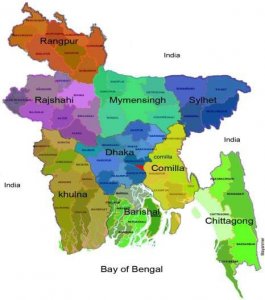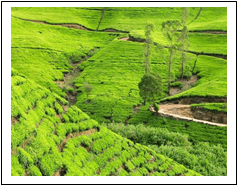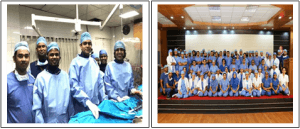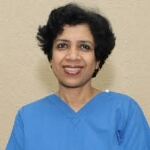 Bangladesh is a small and beautiful country adjoining India. I call Bangladesh beautiful not only because it is my motherland, but also because of the amazingly diverse and stunning natural beauty of the country. To the south is the Bay of Bengal with the world’s largest natural sandy beach at Cox’s Bazar.
Bangladesh is a small and beautiful country adjoining India. I call Bangladesh beautiful not only because it is my motherland, but also because of the amazingly diverse and stunning natural beauty of the country. To the south is the Bay of Bengal with the world’s largest natural sandy beach at Cox’s Bazar.
Southwest, we have the world’s largest mangrove forest called the Sundarbans (Beautiful Forest) that we share with India. Sundarbans, by the way happens to be the natural habitat of the Royal Bengal Tigers as well as the beautiful Chitra deer!

Northeast are the rolling tea gardens of Sylhet (part of the Assam tea region during the British Raj). North of the country we have mile upon mile of mango orchards in Rajshahi. Also, the ancient Buddhist stupas and ruins of monasteries at Mahasthanghar. The mighty Ganges River, when it enters Bangladesh, becomes known as the Padma (the Lotus). It is huge, virtually endless and beautiful.


I could go on and on about the diversity of the natural beauty in different regions of Bangladesh, however another very important fact about Bangladesh is that it happens to be very densely populated. The population of Bangladesh is 164.7 million which makes it one of the most densely populated countries of the world. The population density is highest in the major cities, especially in the capital Dhaka. In fact, at present, 35% of the population lives in the cities.
With rapid urbanization there has been a sharp rise in non-communicable diseases in Bangladesh. Over the last few decades coronary artery disease has become an increasingly important medical and public health problem. It is currently the leading cause of mortality in the country. Bangladeshis are unduly prone to develop coronary artery disease; which is often premature in onset, follows a rapidly progressive course, and is angiographically severe.

Unfortunately, the facilities to care for this huge population of patients with severe coronary artery disease are not enough. The total number of Cath-labs in Bangladesh is 73, of which, 51 are in Dhaka. The total number of Cardiologists is 661. Among them, 327 are interventional cardiologists. Among the interventional cardiologists, 265 (81%) are male and 62 (19%) are female.
It goes without saying that we need more trained cardiologists in Bangladesh, both male as well as female. The current male:female ratio of interventional cardiologists in our country is 4:1. Training to become an interventional cardiologist is obviously not an easy matter; more so I feel for women than men. Additionally, in many instances, it is not easy for female cardiac patients to access the limited facilities available. This is a multi-faceted and complex problem. Lack of education and economic independence as well as deep rooted social and cultural taboos and habits are the root cause for this discrimination, but how do we overcome these prejudices? How do we make cardiac care accessible to all female patients? These are not easy questions with clear cut answers.

We at the National Heart Foundation Hospital & Research Institute, where I work, have always strived to overcome these difficulties. The National Heart Foundation Hospital and Research Institute is a 450-bed tertiary cardiac care hospital located in Dhaka, Bangladesh. We are a non-profit organization working towards training man- (and woman) power in the field of cardiology. At present, we have four female fellows training in interventional cardiology. In fact, two of them are right now in South Korea undergoing a short training program on left main PCI! We have also been working through the last decades to improve the plight of female cardiac patients. To make cardiac care more accessible for the female patients we have set up a separate hospital unit for women and children.
On the 25th of May this year I had the opportunity to attend a unique meeting in Paris of women interventional cardiologists as well as other professional women from all over the world. The “Women as One” Think Tank was a fantastic experience for me. I met some wonderful women coming from different parts of the world, sharing a common passion and enthusiasm for cardiology and women empowerment. They wanted to share their experiences and come up with ideas that would improve the plight of female cardiologists all over the world. “Women as One” was a wakeup call for me. I came to realize again that there is indeed such a lot that needs to be done and can be done for women cardiologists and female cardiac patients of Bangladesh.
It is said that a thousand-mile journey starts with the first step. Well, we plan to take our collective first step in Bangladesh. In a few weeks’ time we plan to have a meeting of female interventional cardiologists of Bangladesh at our hospital auditorium. We plan to explore the steps needed to be taken to improve the plight of our female cardiac patients. We also plan to find avenues to improve the training facilities for female cardiologists. We hope to find ways to make the field of cardiology in Bangladesh more women friendly.
I am excited and full of anticipation. I will keep you all updated with our plans and progress, as I believe it will be an exciting journey for us in Bangladesh.
Our Community | Ebook | Women in Cardiology

